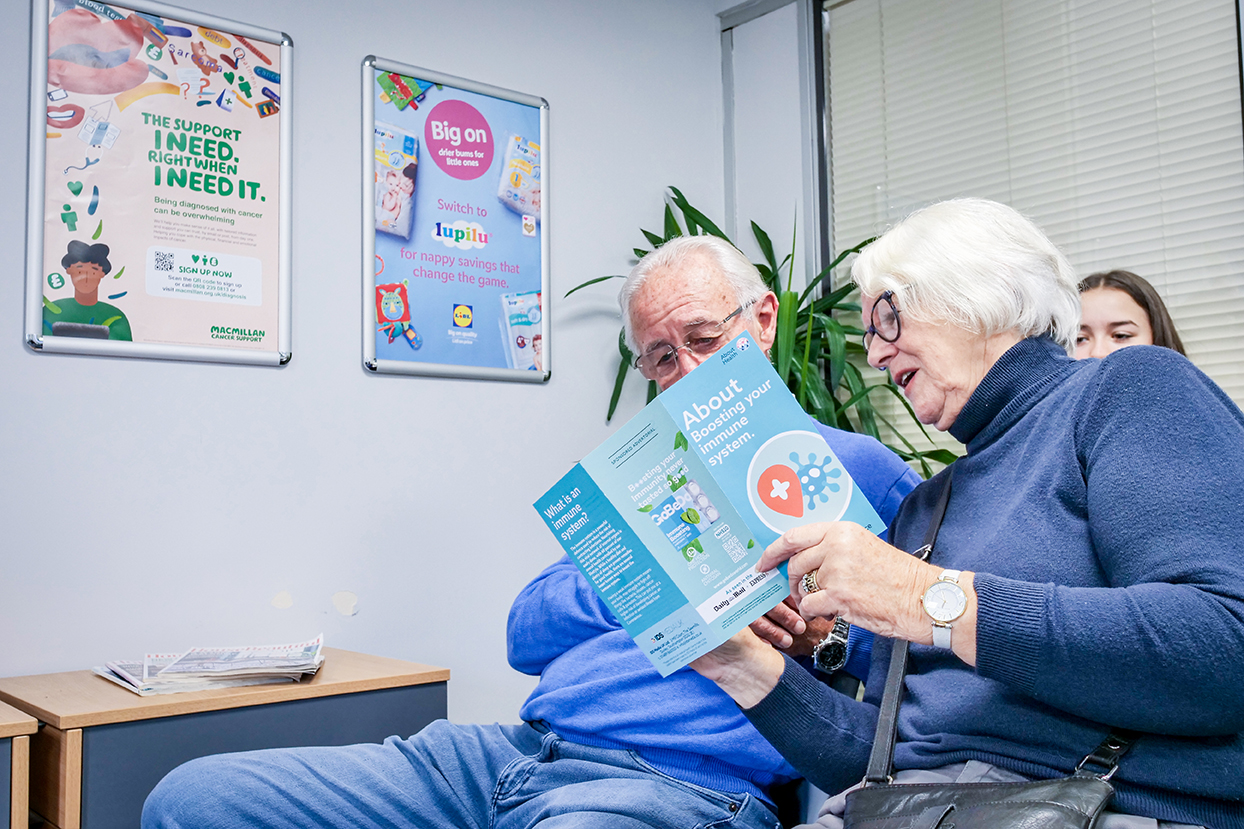From GP Waiting Room to Kitchen Table: Disseminating Crucial Information Through Familiar Channels

In today’s digital age, reaching the elderly population with essential information can be a challenge. While online platforms offer convenience, they can exclude those who are not comfortable with technology. To ensure that crucial information reaches this vulnerable demographic, it’s essential to employ outreach strategies that leverage familiar channels.
Leveraging Traditional Media:
- Print Materials: Distribute informative flyers, leaflets, and posters in GP waiting rooms, pharmacies, and community centres. These materials should use clear language and visuals to convey information effectively.
- Interactive Displays: Leverage the power of video, colour, and movement by disseminating short brand or messaging videos on display screens in the high-traffic areas most frequented by your key demographic in the moments they need your messaging most.
- Strategic Placement: Place media where it’s most likely to be seen – and have an impact. At IDS, we partner with trusted locations to ensure our clients can provide timely updates on health, benefits, and community events.
Utilising Trusted Sources:
- GP Practices: Work closely with GP practices to incorporate relevant information into patient consultations or waiting room materials. This ensures that elderly individuals receive information from a trusted source.
- Pharmacies: Establish or leverage partnerships with pharmacies to disseminate information directly to residents and their families. This can help address the unique needs of those in need of medication or advice.
- Hospital Waiting Rooms: As people age, they may start to have more frequent trips to the hospital, either for themselves or as a supportive friend for someone in need. This can be a helpful opportunity to provide timely, relevant information when people need it most.
Embracing Digital Accessibility:
Data from Statistia shows that less than 10% of people over the age of 60 in the UK have access to the internet or use it regularly. For those who do make use of online resources, there are key factors to consider to help your users get the most out of your online offering.
- Accessible Websites: Ensure that online resources are designed with the elderly in mind. Use clear fonts, simple layouts, and avoid excessive jargon.
- Audio and Video Content: Provide audio and video versions of online content to accommodate those with visual impairments or limited reading skills.
By combining traditional and digital approaches, organisations can effectively reach the elderly population with crucial information. By leveraging familiar channels and ensuring accessibility, it’s possible to bridge the digital divide and empower older individuals to make informed decisions about their health, finances, and well-being.
To find out how you can get your crucial messaging to your vulnerable audiences when and where they need it most, contact IDS today.